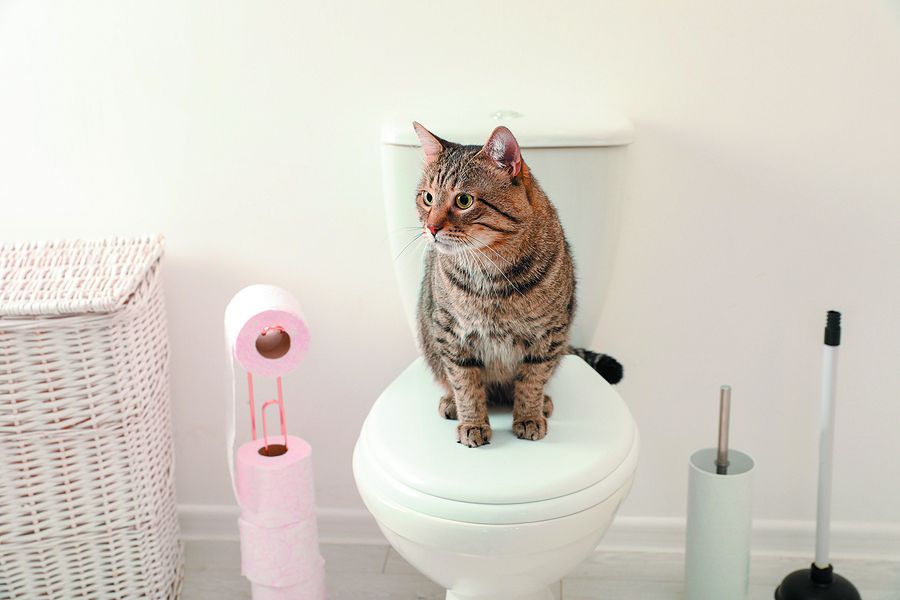The article in the next paragraphs pertaining to Can You Flush Cat Poop Down The Toilet? is pretty much remarkable. You should see for yourself.

Introduction
As cat proprietors, it's essential to be mindful of exactly how we dispose of our feline friends' waste. While it may appear hassle-free to flush feline poop down the commode, this practice can have destructive consequences for both the environment and human health and wellness.
Ecological Impact
Purging cat poop introduces unsafe virus and bloodsuckers into the supply of water, positioning a considerable danger to water ecological communities. These impurities can adversely affect marine life and compromise water high quality.
Health Risks
Along with ecological concerns, purging pet cat waste can likewise position health and wellness risks to human beings. Pet cat feces might include Toxoplasma gondii, a parasite that can create toxoplasmosis-- a potentially severe disease, especially for expectant females and people with damaged body immune systems.
Alternatives to Flushing
Fortunately, there are safer and much more accountable methods to dispose of cat poop. Consider the following choices:
1. Scoop and Dispose in Trash
One of the most typical technique of taking care of pet cat poop is to scoop it into a biodegradable bag and toss it in the garbage. Be sure to use a committed trash scoop and deal with the waste without delay.
2. Use Biodegradable Litter
Go with naturally degradable pet cat trash made from products such as corn or wheat. These litters are eco-friendly and can be securely disposed of in the garbage.
3. Hide in the Yard
If you have a backyard, take into consideration hiding pet cat waste in a designated location away from veggie yards and water sources. Make certain to dig deep adequate to prevent contamination of groundwater.
4. Set Up a Pet Waste Disposal System
Purchase a family pet waste disposal system particularly developed for cat waste. These systems use enzymes to break down the waste, decreasing odor and ecological influence.
Verdict
Accountable animal possession prolongs past providing food and sanctuary-- it also entails appropriate waste monitoring. By refraining from flushing feline poop down the commode and choosing alternate disposal methods, we can decrease our environmental footprint and secure human health.
Why Can’t I Flush Cat Poop?
It Spreads a Parasite
Cats are frequently infected with a parasite called toxoplasma gondii. The parasite causes an infection called toxoplasmosis. It is usually harmless to cats. The parasite only uses cat poop as a host for its eggs. Otherwise, the cat’s immune system usually keeps the infection at low enough levels to maintain its own health. But it does not stop the develop of eggs. These eggs are tiny and surprisingly tough. They may survive for a year before they begin to grow. But that’s the problem.
Our wastewater system is not designed to deal with toxoplasmosis eggs. Instead, most eggs will flush from your toilet into sewers and wastewater management plants. After the sewage is treated for many other harmful things in it, it is typically released into local rivers, lakes, or oceans. Here, the toxoplasmosis eggs can find new hosts, including starfish, crabs, otters, and many other wildlife. For many, this is a significant risk to their health. Toxoplasmosis can also end up infecting water sources that are important for agriculture, which means our deer, pigs, and sheep can get infected too.
Is There Risk to Humans?
There can be a risk to human life from flushing cat poop down the toilet. If you do so, the parasites from your cat’s poop can end up in shellfish, game animals, or livestock. If this meat is then served raw or undercooked, the people who eat it can get sick.
In fact, according to the CDC, 40 million people in the United States are infected with toxoplasma gondii. They get it from exposure to infected seafood, or from some kind of cat poop contamination, like drinking from a stream that is contaminated or touching anything that has come into contact with cat poop. That includes just cleaning a cat litter box.
Most people who get infected with these parasites will not develop any symptoms. However, for pregnant women or for those with compromised immune systems, the parasite can cause severe health problems.
How to Handle Cat Poop
The best way to handle cat poop is actually to clean the box more often. The eggs that the parasite sheds will not become active until one to five days after the cat poops. That means that if you clean daily, you’re much less likely to come into direct contact with infectious eggs.
That said, always dispose of cat poop in the garbage and not down the toilet. Wash your hands before and after you clean the litter box, and bring the bag of poop right outside to your garbage bins.
https://trenchlesssolutionsusa.com/why-cant-i-flush-cat-poop/

We are very eager about Don’t flush cat feces down the toilet and I'm hoping you enjoyed reading our piece. Enjoyed our article? Please share it. Help someone else find it. I love reading our article about How to Dispose of Cat Poop and Litter Without Plastic Bags.
Set An Appointment